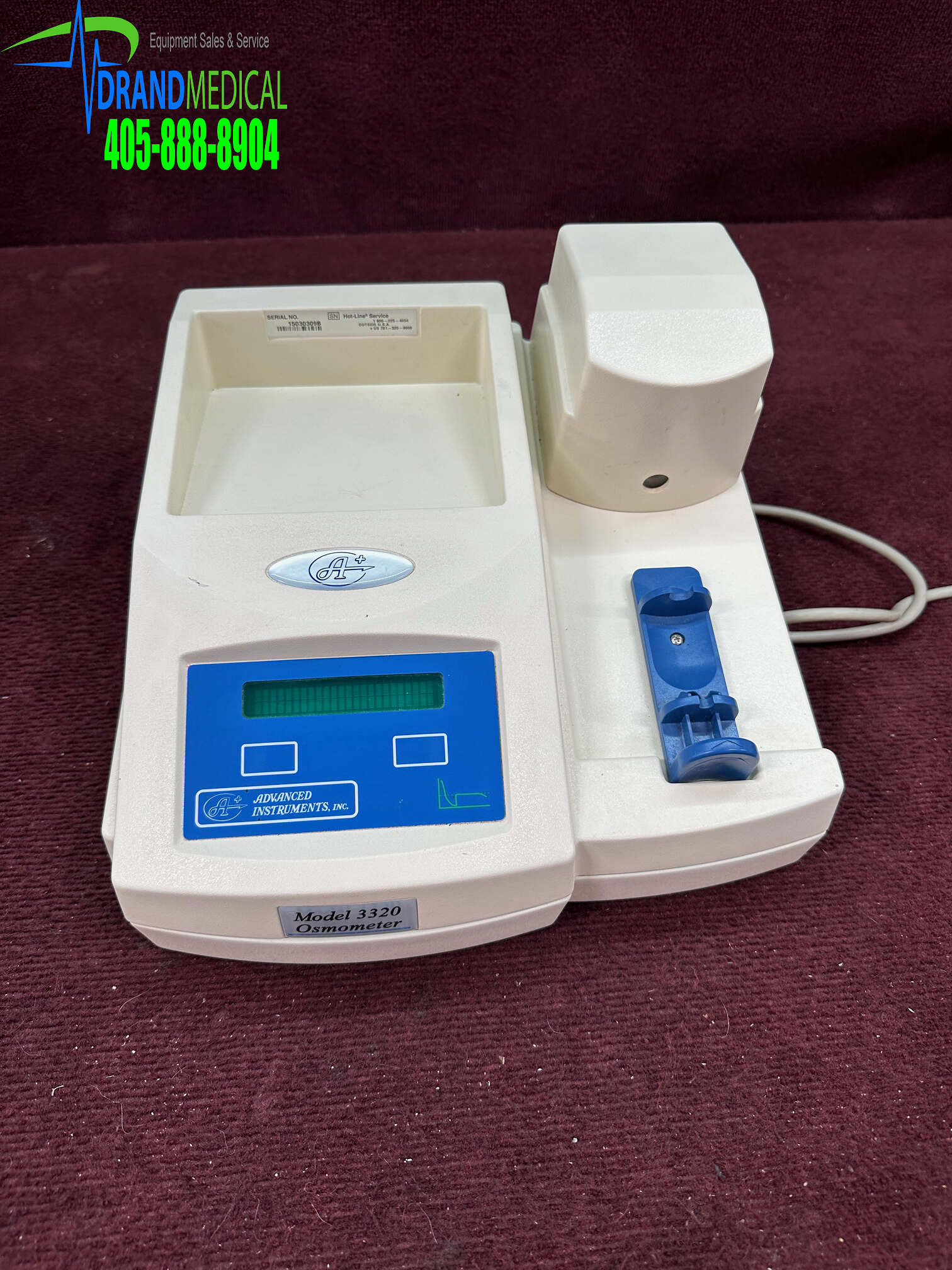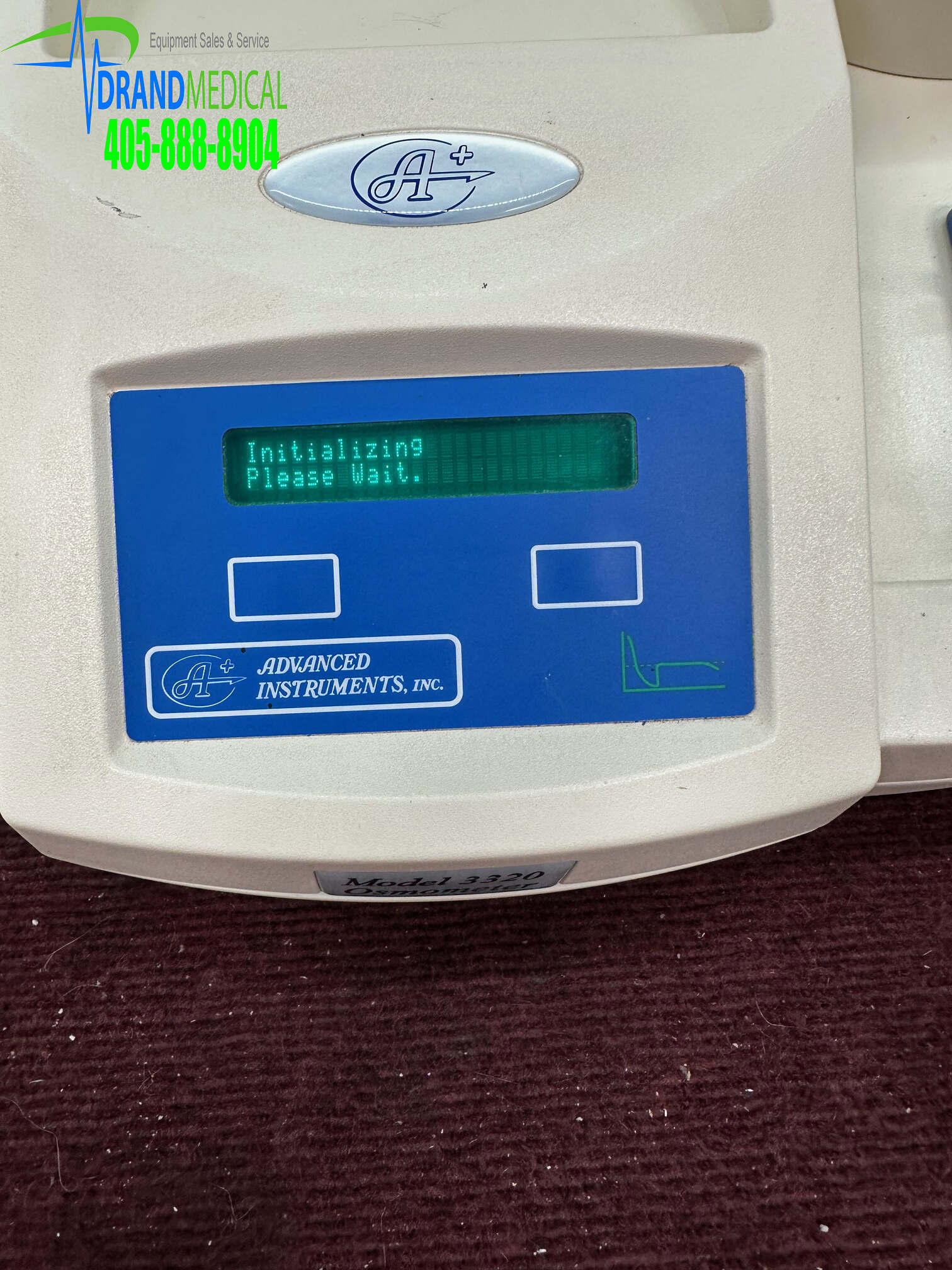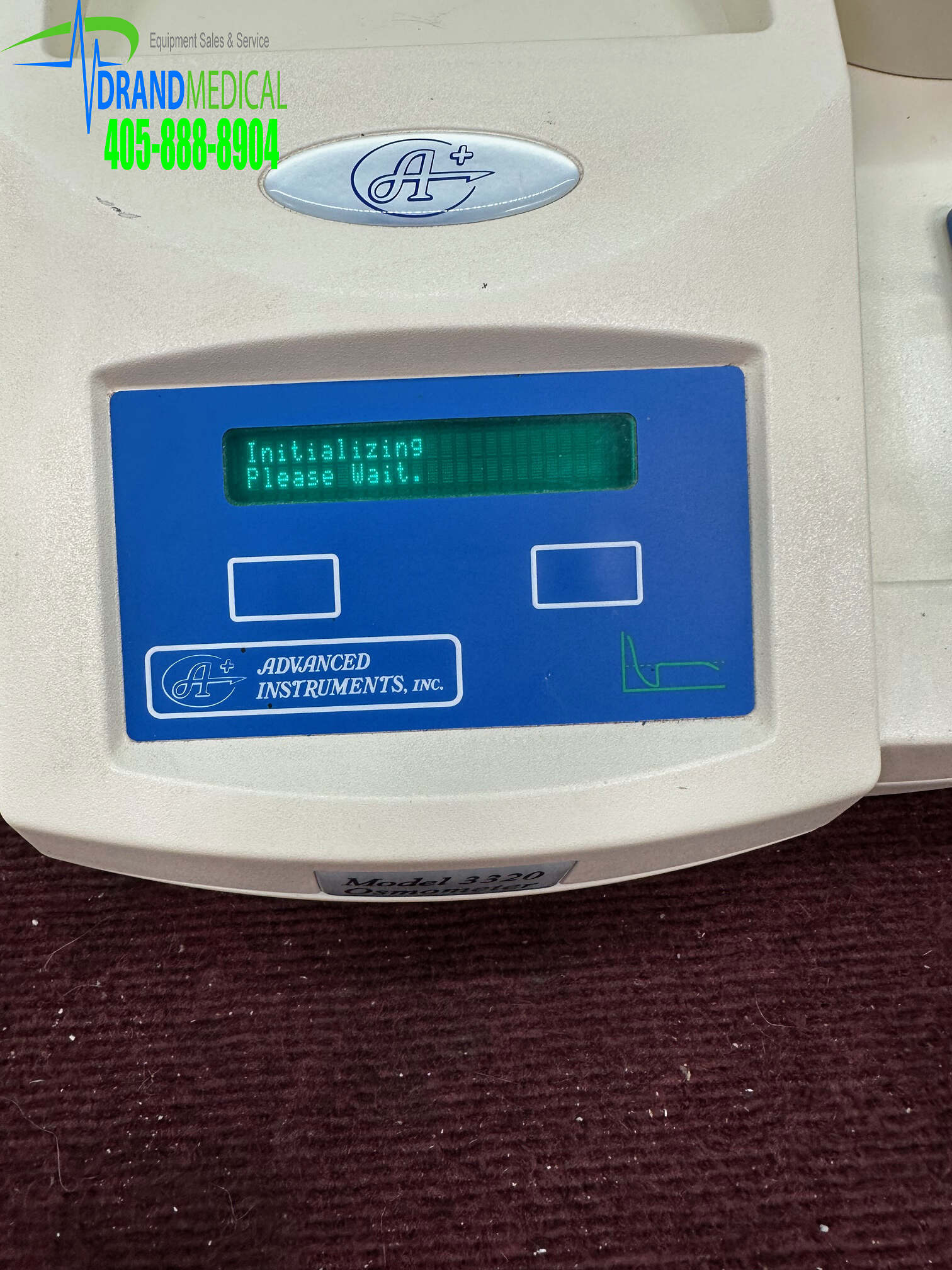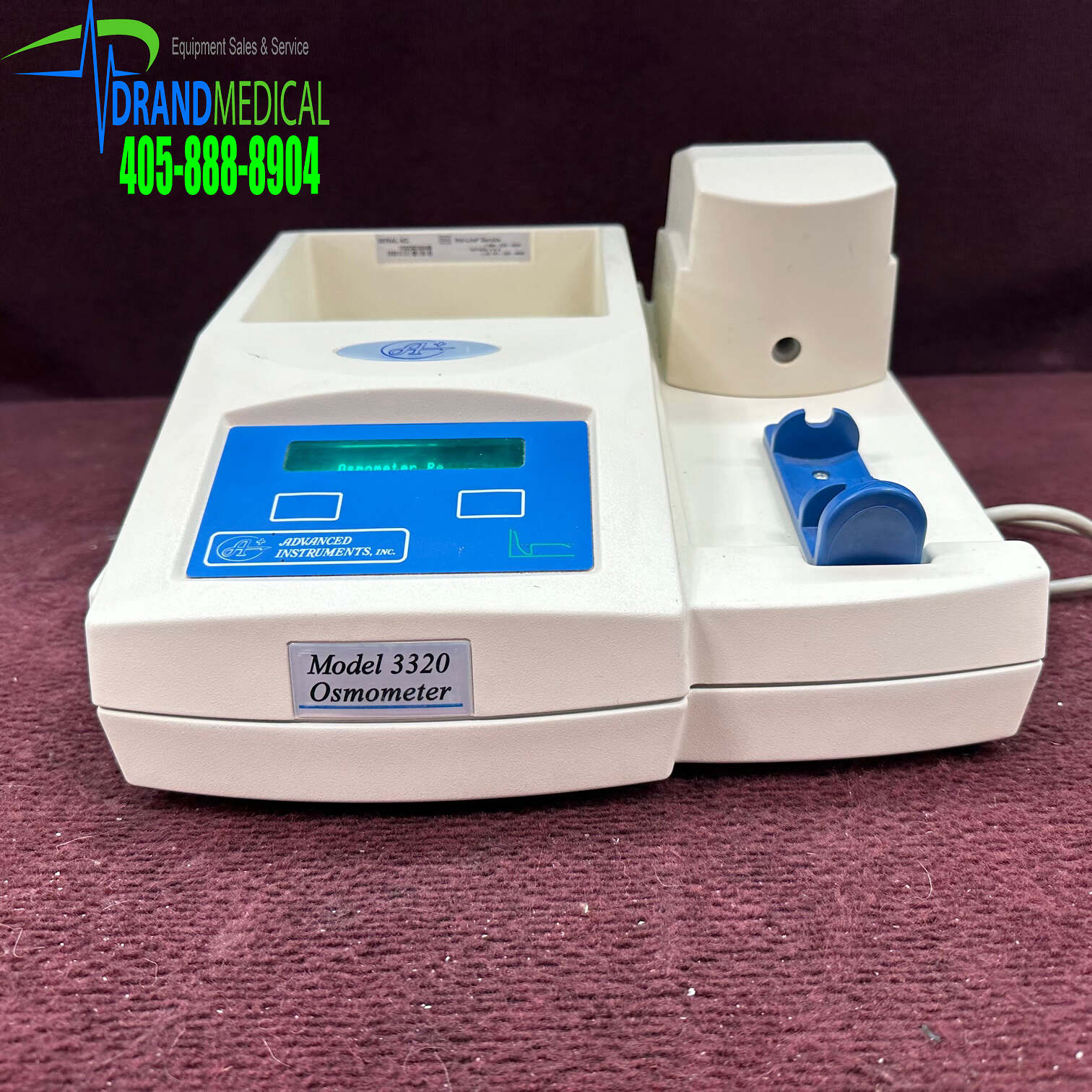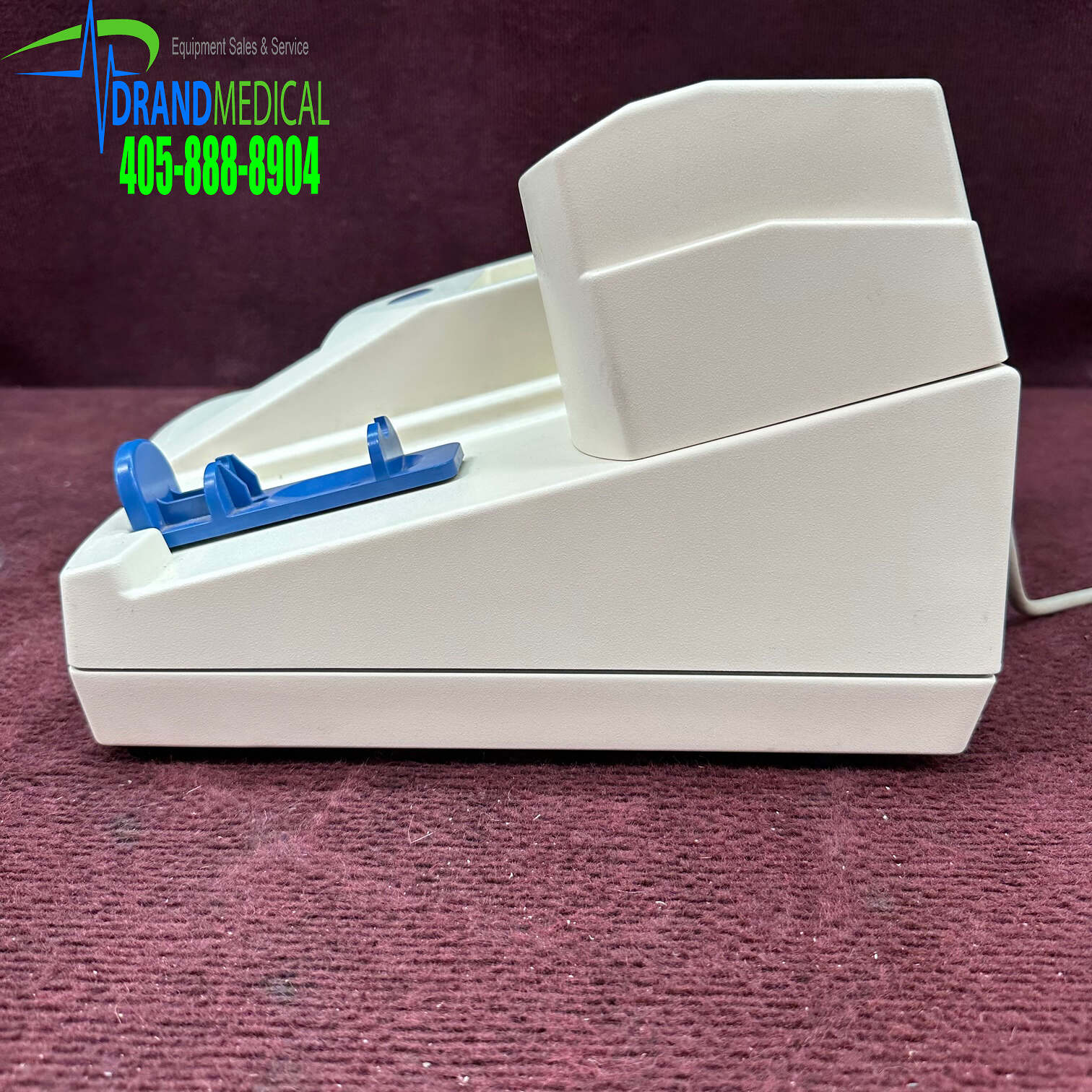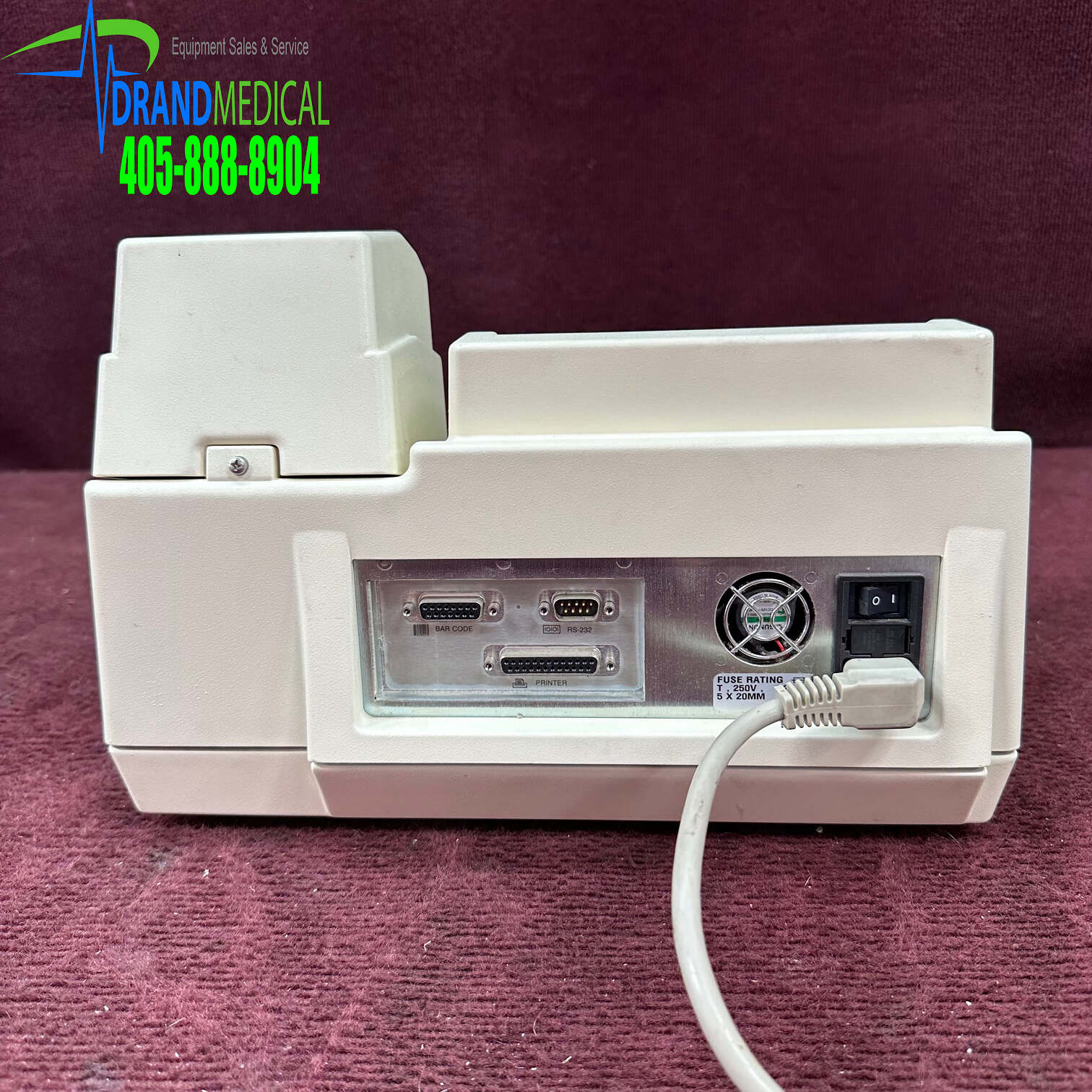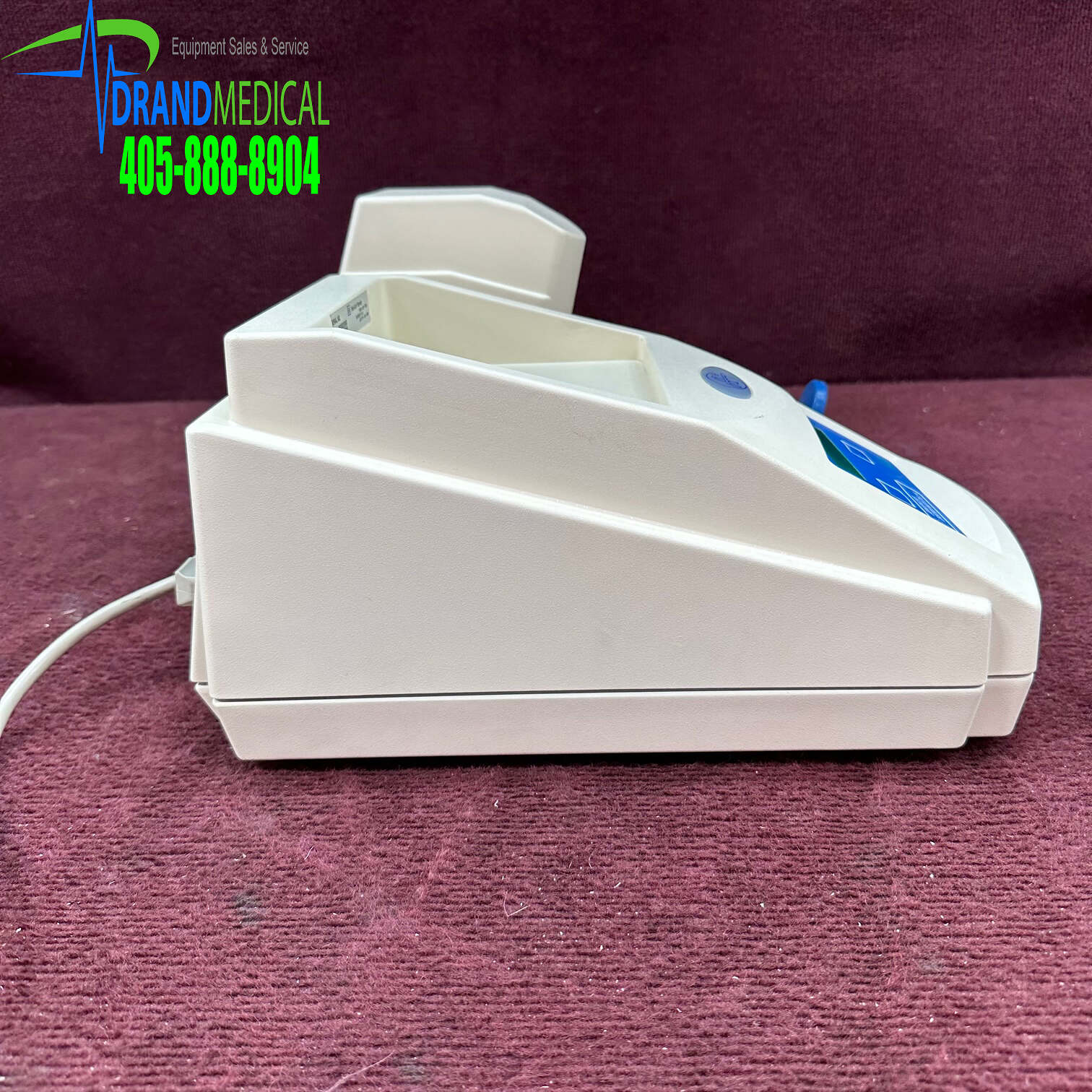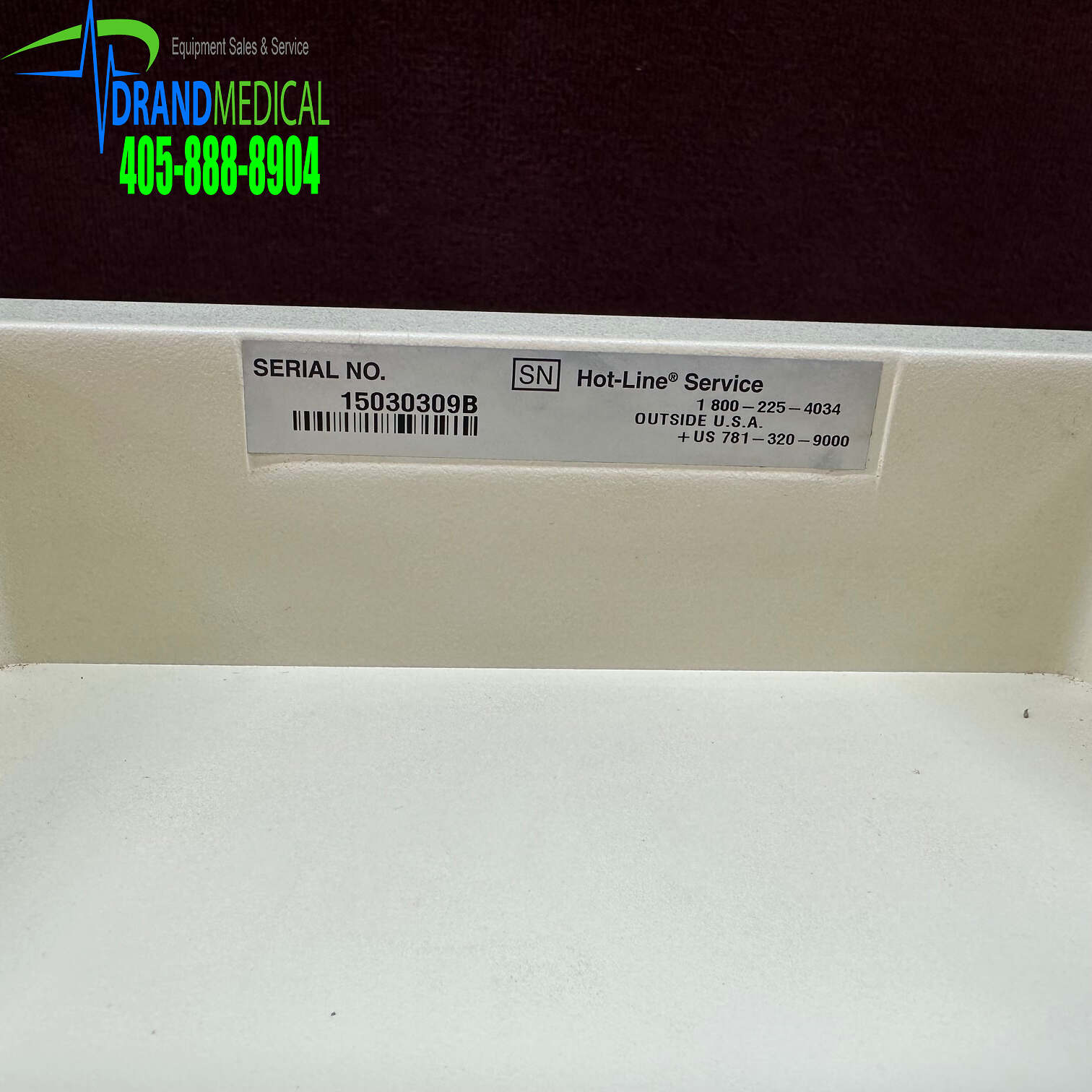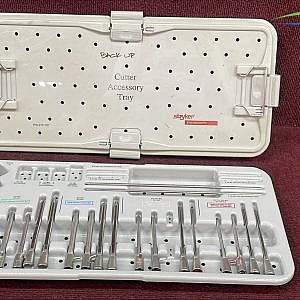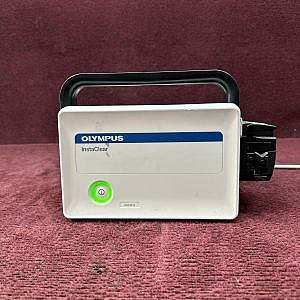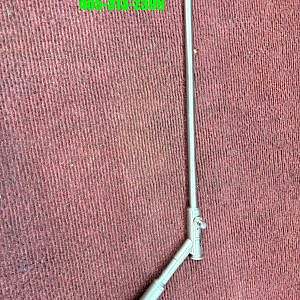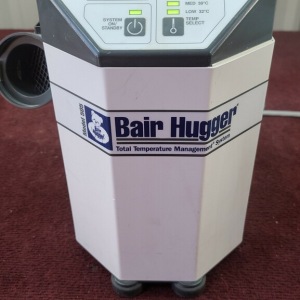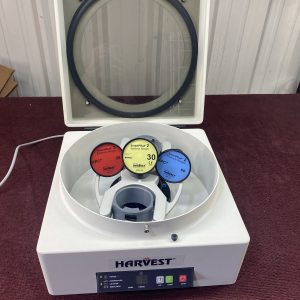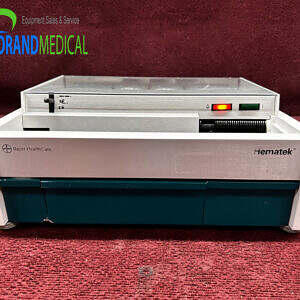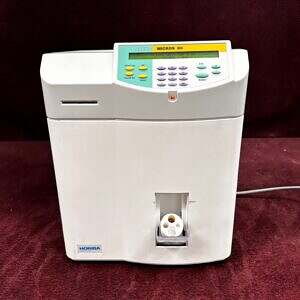Description
The Advanced® Model 3320 Micro-Osmometer is a single-sample osmometer designed to provide fast, accurate test results using a 20 µL sample. It combines proven freezing point technology with an elegant design that is both simple to operate and easy to maintain. It is ideally suited for routine osmolality testing in clinical diagnostic, pharmaceutical, and industrial laboratory settings.
Osmolality Testing Made Simple
Achieving results with the Model 3320 is fast and easy. Simply scan the barcode of the sample (optional), aspirate the sample into the sampler tip, place the sampler into the instrument’s cradle, and insert into the system. Testing begins automatically and results are displayed in 60 seconds.
ADVANCED 3320 OSMOMETER FEATURES AND BENEFITS
• Freezing point technology – The industry preferred method for determining sample concentration because it accounts for ALL solutes in solution
• Small sample size – Requires only a 20 µL sample and is perfectly suited for sample-limited applications
• Fast and reliable test results – With a 60- second test time, the 3320 can quickly process samples and improve laboratory productivity with industry-leading accuracy and precision
• Easy to use – With features including one-step sampling, a menu-driven interface, automatic calibration, and onboard statistical analysis, the 3320 combines world-class performance with a user-friendly package
• Proven reliability – The 3320 system incorporates over 50 years of applied technology and expertise in the field of osmometry and is ideal for laboratories seeking greater control, minimal downtime, and higher productivity
• Versatile sample processing – The 3320 is ideally suited for analyzing complex aqueous mixtures including blood,serum, plasma, urine, cell cultures, drug formulations, and many other non biological sample types
Theory of Freezing Point Depression for Osmolality Determination
Advanced osmometers utilize the industry-preferred freezing point depression method to determine the osmolality of an aqueous-based solution. When a solute (particles) is dissolved in a solvent (water), the freezing point of that solution is lowered compared to that of the solvent alone. As more solute is added, the freezing point decreases further. Therefore, by precisely measuring the freezing point of the solution, the osmolality (i.e., concentration) can be determined.
